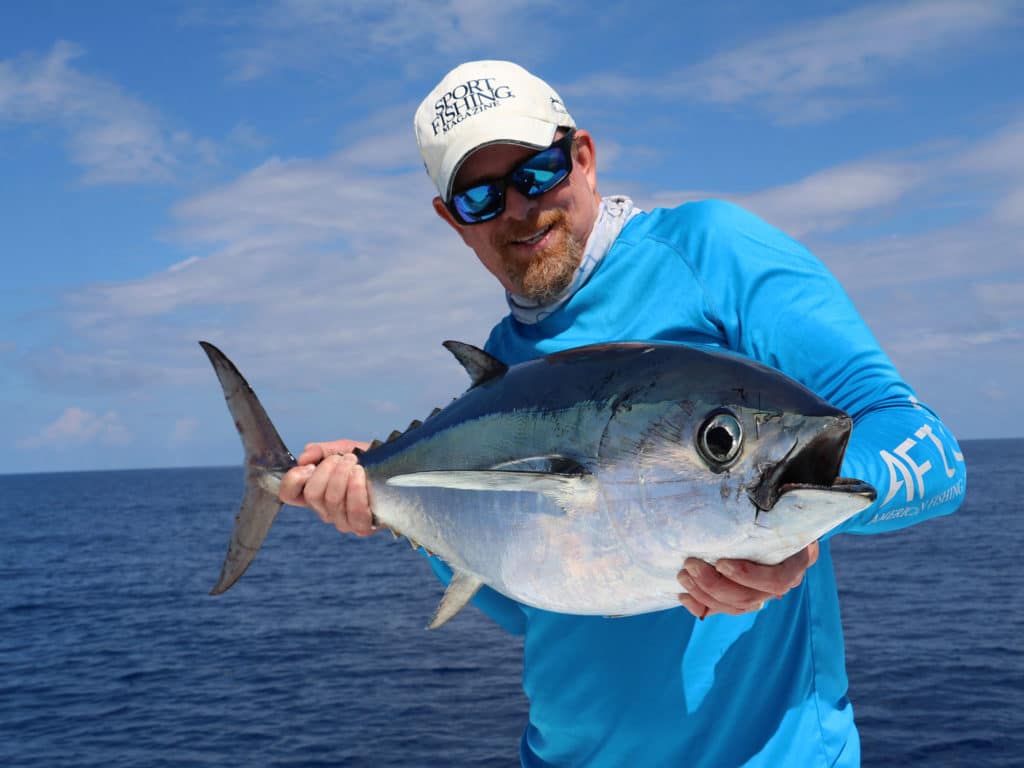
Though not the biggest members of the tuna tribe, blackfin tuna are a big deal for South Florida anglers this month. In May, blackfins flood offshore waters from the Keys up along the Atlantic coast to Palm Beach. The hard-fighting, good-tasting fish can be caught on live bait, dead bait and lures while drifting, trolling, kite-fishing, or anchored up over a wreck or reef.
The biggest key to success is to chum, preferably with live bait such as pilchards, although chunks of dead bait work just fine. Blackfin fanatics think nothing of heading offshore with 500 to 1,000 live pilchards for chumming and for bait.
In the Keys, anglers head for the humps, where the bottom rises to within 300 feet of the surface, creating upwellings that attract bait and fish. Boating anglers fling out bait nets full of pilchards until the fish start to bust the surface as they feed on the live chum behind the boat.
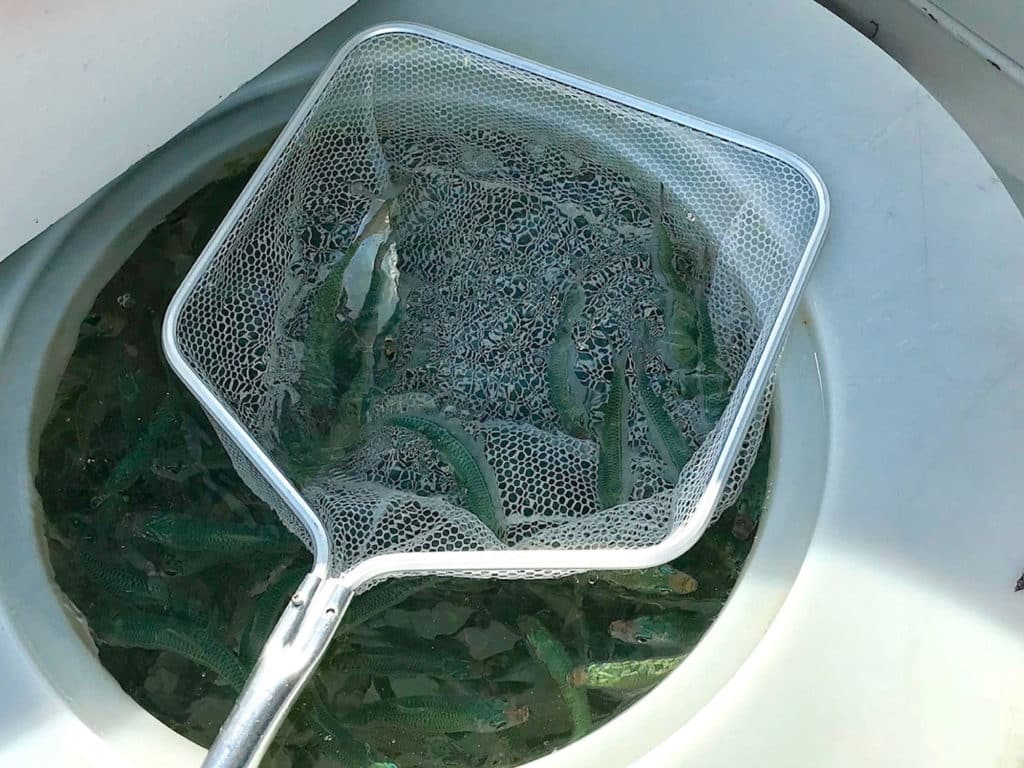
Chum Heavy
Capt. Scott Stanczyk, who fishes on Catch 22 out of Islamorada, doesn’t head offshore unless he has 1,000 pilchards in the livewell. His mate chums with the liveys after equipping anglers with spinning rods spooled with straight 30-pound monofilament tied to tiny No. 1 hooks, which are pinned through the noses of the pilchards. The small hooks allow the baits to swim naturally when cast and free-lined back toward the action.
On a day when the tuna bite explodes, some of Stanczyk’s anglers turn to 10-weight fly rods and flies tied to resemble pilchards. They cast the fly and let it drift back in the current, then strip it back to the boat.
From Miami to Palm Beach, blackfin tuna bite best from May into July. Most anglers seeking tuna either anchor or drift in clean blue water near wrecks or reef in 100- to 200-foot depths, and toss out several live pilchards every five minutes.
If the tuna show up, anglers throw even more pilchards to whip the blackfins into a feeding frenzy. “Sometimes it takes 50 to 100 chummers to get all the fish up,” says Capt. Trey Claus of the Coral Gables charter boat Qualifier.
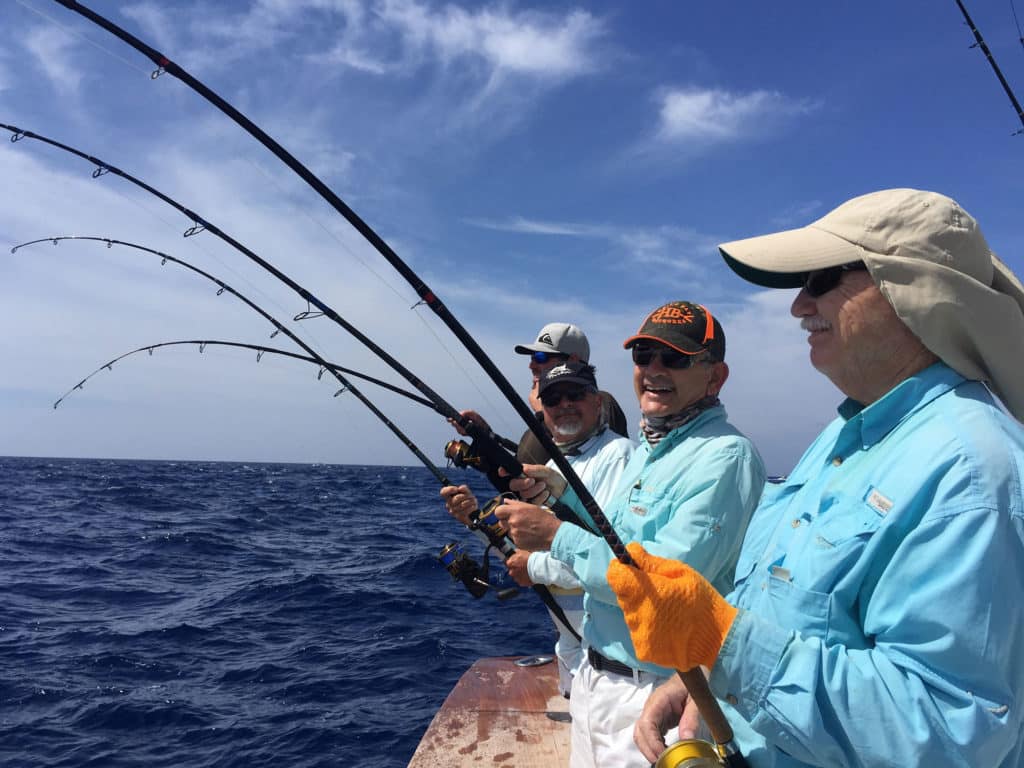
Staggered Lines
Claus likes to put out live baits on the surface, flying two fishing kites with three lines each, along with some flat-line baits. That way, when the tuna show up, the hooked baits blend in with the free-swimming chum. This methodology often results in multiple hook-ups.
Heavy live chumming is preferable, but sometimes live pilchards are scarce. In these cases, try stretching your bait supply by tossing out just a couple of live pilchards every 15 or 20 minutes, instead of every five minutes.
Capt. Dennis Forgione of Pembroke Pines, who fishes out of Haulover Inlet on Free Spool, says that by using this method, most anglers can get by with only 50 pilchards in the livewell. “The average guy can catch enough pilchards on gold hooks. You don’t always need a thousand pilchards. Just throw out a couple every half hour,” explains Forgione, whose method also produces sailfish, kingfish and wahoo.
Anglers can also chum with a variety of frozen baits. When catching pilchards is difficult, Forgione thaws a box of glass minnows in a bucket of water and throws a handful of the little fish in the water every 20 minutes. He also puts a box of ground menhaden in a chum bag.
Capt. Mario Coté of Hollywood, who fishes out of Port Everglades Inlet on No Vacansea, reveals that using a box or two of frozen sardines for chum works almost as well as live chumming. He cuts the sardines in pieces and periodically throws a few chunks into the water. Other captains chum with chunks of frozen herring and even chunks of squid.
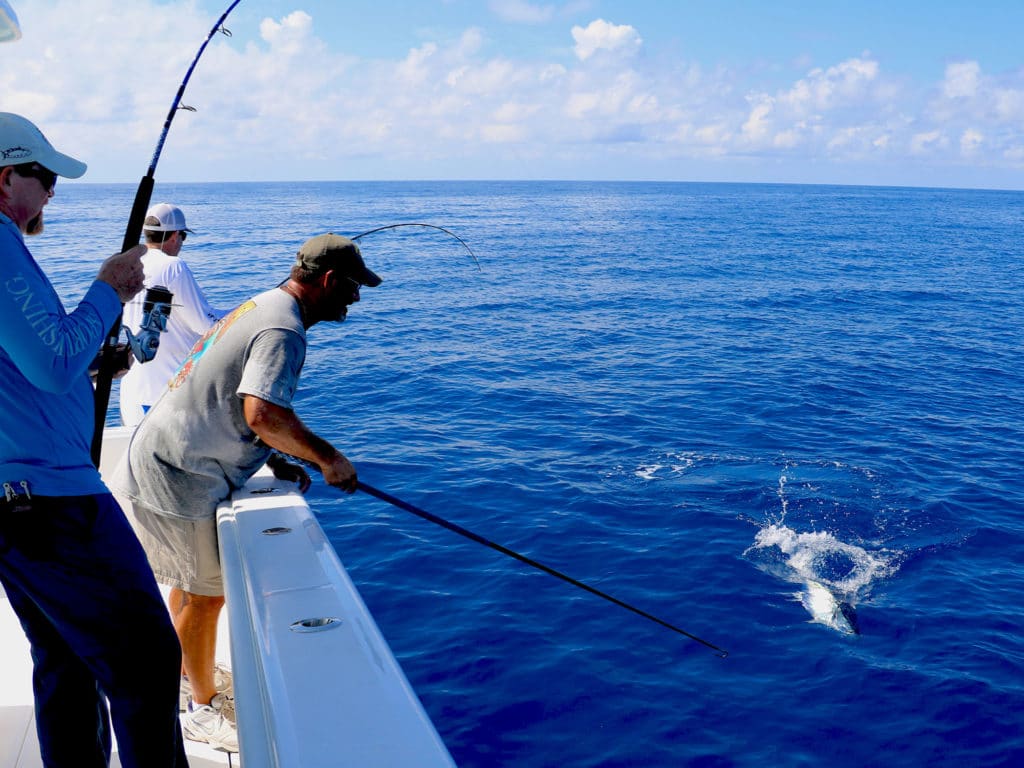
Scaling Down
Coté starts a tuna trip by having his anglers catch pilchards on sabiki rigs. A few dozen baits are all he needs. “I love pilchards,” Coté says. “I think they’re the best bait around. Everything loves a pilchard.”
He drifts with the pilchards on two flat lines and on two weighted lines, one down about 50 feet and the other close to the bottom. If there is little to no current, he slow-trolls the baits at 1 to 2 knots.
For tackle, Coté uses 20-pound conventional outfits with 15-foot leaders of 40-pound-test fluorocarbon. Low-visibility fluorocarbon is essential because the tuna can see exceptionally well, he believes.
But even when chunking attracts tuna, they won’t always eat a bait drifted back on a hook. When that happens, anglers need to turn to lighter tackle. If you usually fish with 30-pound-test leaders and size 5/0 circle hooks, try downsizing to 20-pound-test fluorocarbon leaders with 2/0 or 1/0 hooks.
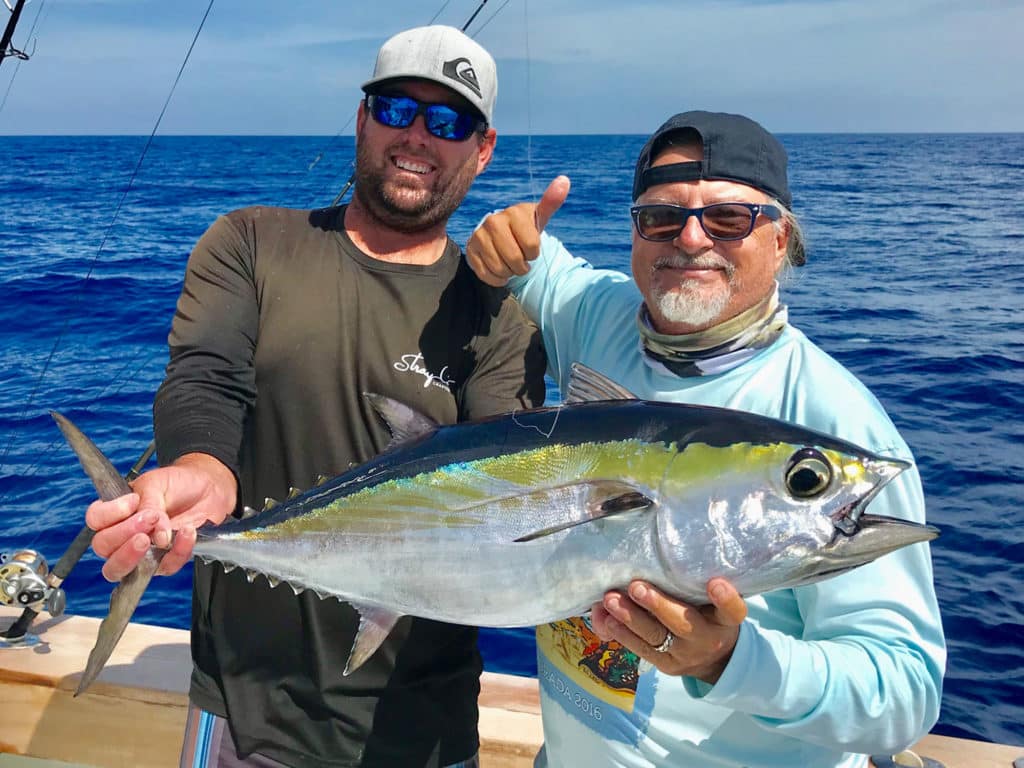
Low-Light Conditions
Coté says that tuna bite best during low-light conditions, including early in the morning, late in the afternoon, and on overcast or rainy days. “If you were in the water on a sunny day and you had to look up to see something, it wouldn’t be easy,” Coté explains.
No matter what time of day he’s fishing, Coté slow-trolls offshore until he finds the tuna, then he drifts in that depth.
Wherever you find the blackfins, odds are good that you’ll also find bonito (little tunny), which fight just as hard as their cousins, but don’t taste anywhere near as good. Some days, you might have to catch a bunch of bonito before you catch a blackfin, which can be both physically and emotionally exhausting. There’s another downside. Schools of tuna attract sharks. If you take your time reeling in a tuna, you risk a shark attack.
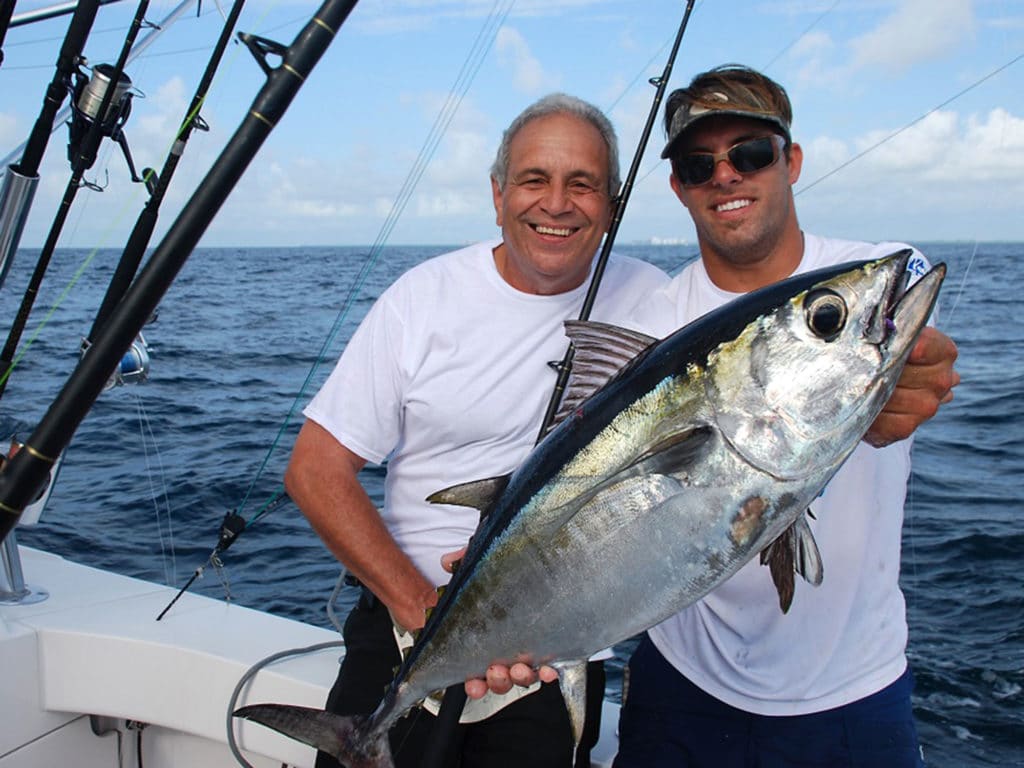
Sear and Serve
When he gets a whole blackfin to the boat, Coté’s favorite recipe is to cut the tuna into chunks, removing the blood lines, then marinating the fish overnight in a container with sesame oil and sesame seeds. The following day he sears the tuna in a very hot pan and serves it rare or medium-rare.
Read Next: Blackfin Tuna Blowout in the Florida Keys
Forgione bleeds a blackfin by cutting its throat immediately after catching it, then puts the fish on ice. Back at the dock, he fillets the tuna, removing all the bones, and cuts it into triangular chunks. When he arrives home, he marinates the chunks in teriyaki sauce for about an hour.
Then he puts the tuna directly on a grill, closes the lid and cooks the chunks for about 15 minutes, depending on the thickness, serving them while they are still pink in the middle. To Forgione, it’s the perfect way to end an action-packed day on the water.








